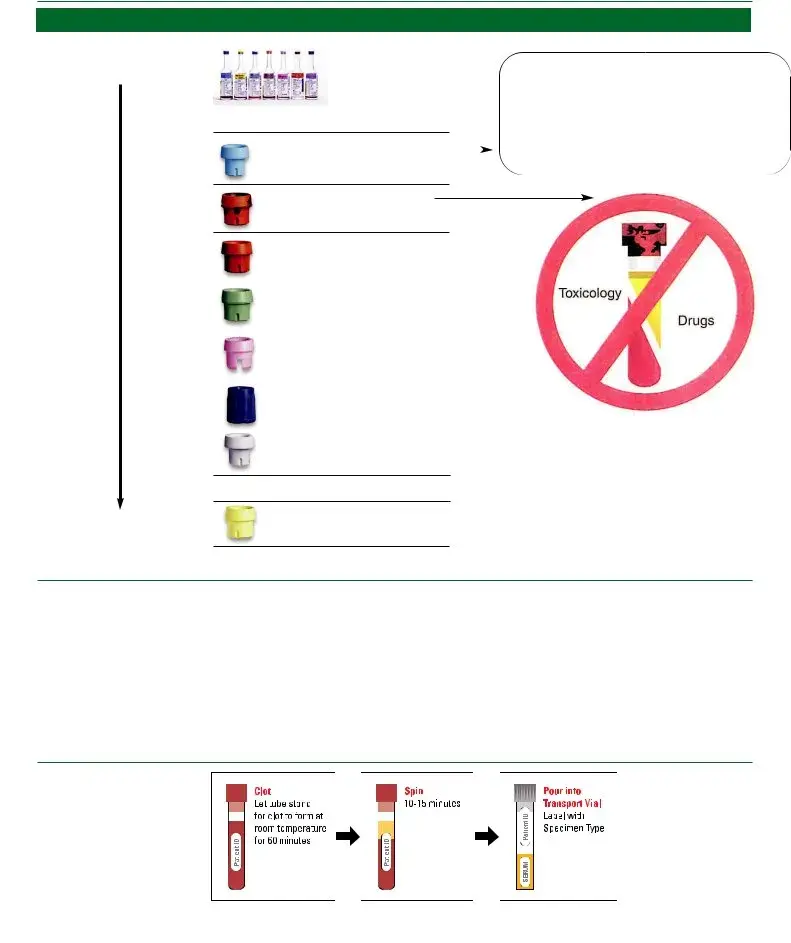In the realm of medical diagnostics, the accuracy and reliability of blood specimen collection are paramount. The Quest Diagnostics Specimen Tubes form serves as a crucial guide for healthcare professionals in this process, detailing the specific order of draw and the additives present in each tube that are essential for various laboratory tests. It outlines the importance of using culture bottles first, followed by tubes with specific additives like Citrate in light blue stopper tubes - which must be filled to completion to maintain the integrity of the sample. The form highlights the necessity of avoiding gel tubes for toxicology or drug testing, as detailed for the red/black and red stopper tubes. Furthermore, it explains the need for a discard tube when using a winged blood collection set for venipuncture to ensure proper blood-to-additive ratios, particularly for coagulation tests. It also addresses the tubes to be used last in the collection process, such as those with citrate ACD in yellow stopper tubes. The Quest Diagnostics form serves as more than a simple checklist; it is a comprehensive tool designed to optimize specimen collection, ensuring accurate test results while maintaining patient safety. Additionally, it provides a mixing chart for technicians, instructing them on the number of inversions necessary for each type of additive to ensure samples are adequately prepared for analysis. Such meticulous details underscore the critical role this form plays in the seamless operation of clinical laboratories and the delivery of high-quality patient care.
| Question | Answer |
|---|---|
| Form Name | Quest Diagnostics Specimen Tubes |
| Form Length | 1 pages |
| Fillable? | No |
| Fillable fields | 0 |
| Avg. time to fill out | 15 sec |
| Other names | cmp test tube color quest, quest diagnostics tubes, blood collection tube color guide quest, blood collection tube color guide quest diagnostics |

Quest Diagnostics Blood Collection
Order of Draw |
Bottle/Stopper |
Additive |
FIRST
CULTURE BOTTLES |
See bottle label |
|
LIGHT BLUE |
Citrate |
|
|
||
(TUBE MUST BE |
|
|
FILLED COMPLETELY) |
|
|
RED/BLACK |
Gel, serum |
|
(DO NOT USE GEL TUBES FOR TOXICOLOGY OR DRUG TESTING)
RED |
No gel, serum |
|||
|
|
|
|
|
GREEN |
Heparin |
|||
or TAN |
|
|
|
|
|
|
|
|
|
LAVENDER |
EDTA |
|||
or TAN |
|
|
|
|
|
|
|
||
ROYAL BLUE |
EDTA |
|||
|
|
|
||
GRAY |
Sodium Flouride |
|||
|
(Glucose) |
|||
When using a winged blood collection set for venipuncture and a coagulation (citrate) tube is the first specimen to be drawn, a discard tube should be drawn first. The discard tube must be used to fill the blood collection set tubing’s “dead space” with blood but the discard tube does not need to be completely filled. This important step will ensure maintenance of the proper
NOTE: See inside back cover for Specimen Collection tubes
TUBES WITH OTHER ADDITIVES
LAST
YELLOW |
Citrate ACD |
(DRAWN LAST) |
|
Courtesy and © Becton, Dickinson and Company
Mixing Chart
BD Vacutainer™ |
|
|
Tube Type |
Stopper Color |
Number of Inversions |
|
|
|
EDTA |
Lavender |
|
|
|
|
Citrate |
Light Blue |
|
|
|
|
SST with gel |
Red/Black |
5 |
|
|
|
Serum |
Red |
5 |
|
|
|
Sodium Fluoride |
Gray |
|
|
|
|
Heparin |
Green |
|
|
|
|
Separate
For serum (no gel) tubes only.
For other Blood, Serum or Plasma separation instructions, see the Specimen Collection and Handling section of this Directory
